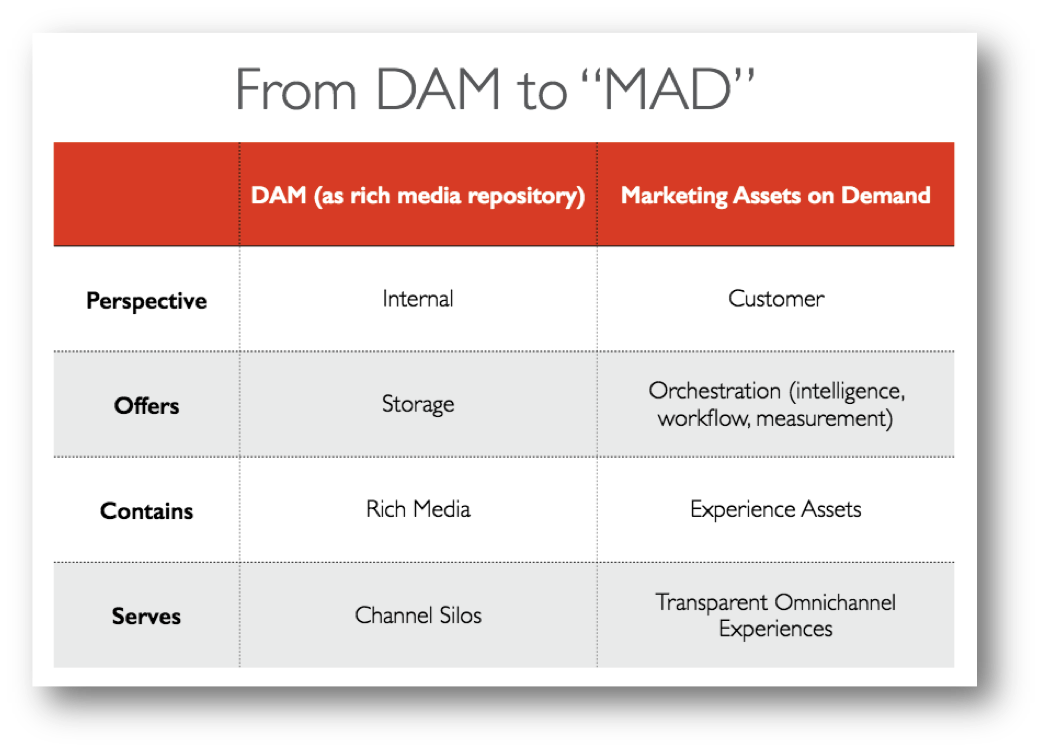Customer Experience Management Pushes Marketers Beyond DAM to MAD
In order to understand the role of rich media in customer experience, just recall how the web looked in the mid-1990s. Constrained by crude content management systems, expensive storage, and above all, by dial up modems, web sites were dominated by text. Photographs were small, low resolution, and rare — in 1996, even the home page of the New York Times offered only a single grainy photo. Video was unthinkable.
Compared to existing media, such as glossy color magazines and blockbuster films, the web in the late 1990s was like a crudely printed document created by Gutenberg’s less talented brother.
As a medium, then, the early web was a substantial step backwards rather than a startling innovation. By the 1990s, consumers were entirely used to glossy, large-format publications such as Life Magazine, always-on radio programing, a huge variety of television shows, and immersive, blockbuster films. In comparison, “surfing” the web was like paging through a crudely printed document created by Gutenberg’s less talented brother. (But with hyperlinks!)
It’s as if we as species have been patiently waiting for the internet to emerge from its text-centric childhood and become a medium capable of providing truly engaging and dynamic experiences.
In retrospect, it’s shocking how slowly the infrastructure — and thus web site design — evolved. Flickr (2004) for photo sharing, and YouTube (2005) for video were both founded nearly a decade after the Netscape browser launched the commercial web in 1995. Even today, the majority of websites are text heavy and image poor. It’s as if we as species have been patiently waiting for the internet to emerge from its text-centric childhood and become a medium capable of providing truly engaging and dynamic experiences.
In short, rich media is a prerequisite for rich experiences. Without the advent of large format photos, video, audio, animation, and other dynamic content, it is inconceivable that we talk today of the imperative for customer experience management. Unsurprisingly, digital asset management (DAM) technologies and practices have slowly but surely gained importance among marketers and others concerned with customer experience in the last few years. But the consumer appetite for more consistent, cohesive, and relevant experiences is rapidly evolving, and rich media capabilities need to follow suit. In my latest DCG Insight Paper, I argue that firms should stop thinking of DAM as a repository for certain types of content and instead aim for a system — which I call MAD, for marketing assets on demand — that can pull together content and assets from multiple sources in order to orchestrate the integrated, omnichannel experiences buyers now seek. The full report is available at Rethinking DAM: Customer Experience Demands Intelligent, Integrated Content.
Treating DAM (and other systems) as a siloed repository — this is what we call the DAM era — has to end, not because it is inherently flawed, but because it must be sacrificed on the altar of customer experience.
By turning DAM into MAD — a system for aggregating diverse content assets from numerous other software solutions and orchestrating them as the integrated, intelligent experiences that customers seek — organizations can inject customer-centricity into the experience production workflow. Crucially, this means that a company can begin to offer the rich, holistic experiences that appeal to consumers even before it has completed the slow and often painful transformation to an organization-wide customer-centric culture.
Learn more
Download report: Rethinking DAM: Customer Experience Demands Intelligent, Integrated Content.










